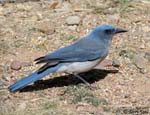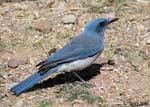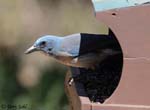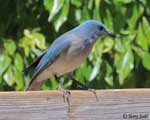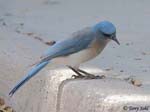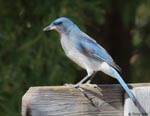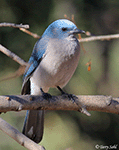| Length:11.5 inches | Wingspan: 20 inches | Seasonality: Non-resident in South Dakota |
| ID Keys: Bluish upperparts, gray underparts, mantle typically is grayer in tone than rest of upperparts | ||
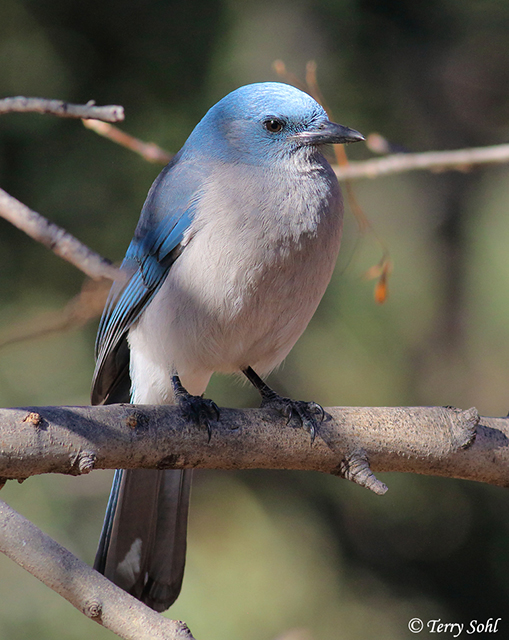 The
Mexican Jay is found throughout much of Mexico, with a range that just
crosses into the United States in southeastern Arizona, southwestern New
Mexico, and southwestern Texas. Very social birds, Mexican Jays have complex
social structures, particularly during the summer breeding season, when
nesting groups cooperatively assist nesting parents in raising the young.
Even a single nest may contain eggs of mixed parentage.
The
Mexican Jay is found throughout much of Mexico, with a range that just
crosses into the United States in southeastern Arizona, southwestern New
Mexico, and southwestern Texas. Very social birds, Mexican Jays have complex
social structures, particularly during the summer breeding season, when
nesting groups cooperatively assist nesting parents in raising the young.
Even a single nest may contain eggs of mixed parentage.
Habitat: Found in open oak and mixed-oak woodlands, generally in canyons up to moderate elevations on mountain slopes.
Diet: Omnivorous, feeding on both plant and animal matter. Feeds heavily on acorns and pine seeds when available, storing them in caches in the ground for later retrieval. Also will feed on many insects in the summer, with other food items including small vertebrates such as small lizards or snakes, bird eggs, and fruits or berries.
Behavior: Complex social behavior during the breeding season, as discussed elsewhere on this page. Uses a variety of foraging techniques depending upon food availability, foraging from the ground to relatively high in the canopy.
Nesting: The nest of a Mexican Jay is a large cup of twigs and sticks, lined with softer plant material, and placed anywhere from relatively close to the ground to 50 feet or more up in the canopy. The female alone incubates the eggs, but while incubating, other individuals in the nesting group bringing food to the female. Both parents, as well as other members of the nesting group, help to feed the young.
Song: Has a variety of calls
Migration: Considered a permanent resident throughout their range, with little movement from breeding areas.
Interactive eBird Map: Click here to access an interactive map of Mexican Jay sightings
Similar Species: Similar to Western Scrub-Jay, Pinyon Jay
Conservation Status: Populations of the Mexcian Jay appear to be declining in some areas, but they are still relatively widespread and common in areas. The IUCN lists the Mexican Jay as a species of "Least Concern".
Further Information:
Photo Information: Photo taken on December 28th, 2018 - Madera Canyon, south of Tucson, Arizona - Terry Sohl
| Click below for a higher-resolution map |
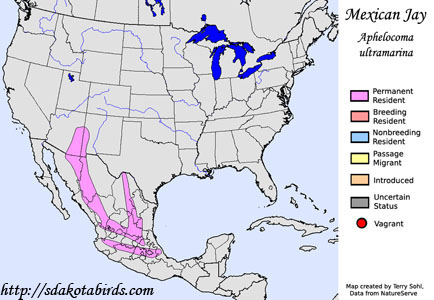 |
| South Dakota Status: Non-resident in South Dakota |
Additional Mexican Jay Photos
Click for a higher-resolution version of these photos
